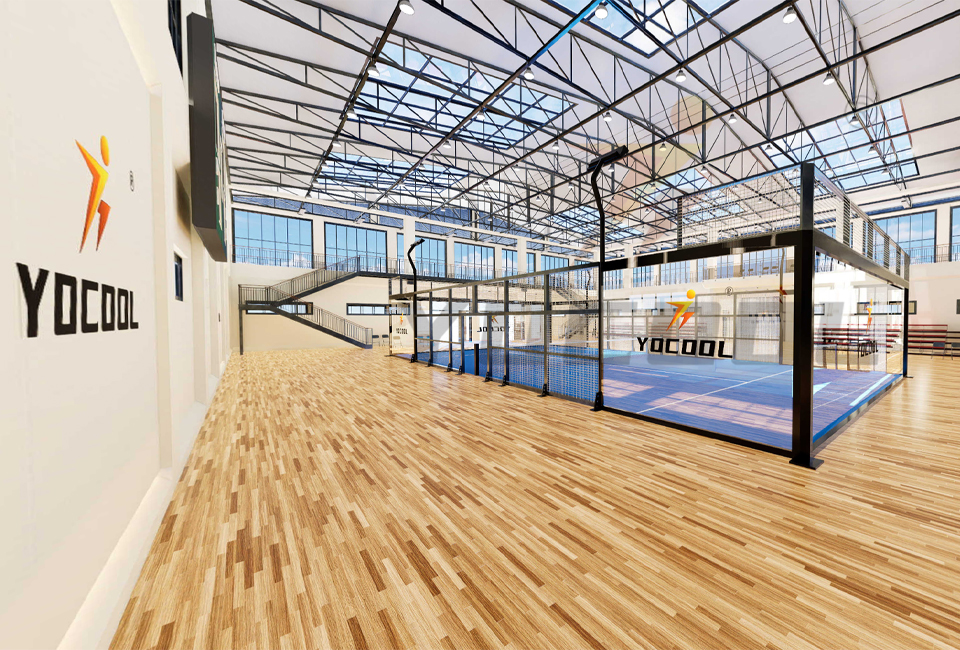

Padel Tennis Understanding the Cost and Supplier Landscape
Padel tennis, a sport that combines elements of tennis and squash, has rapidly gained popularity in recent years. Its appeal lies in the easy learning curve, social interaction, and the fact that it can be played year-round. As the sport grows, so does the demand for equipment and facilities, leading to an increase in suppliers and an array of prices for padel gear. Understanding the cost associated with padel tennis and the landscape of its suppliers is crucial for players, clubs, and investors.
The Cost of Padel Tennis Equipment
When starting out in padel tennis, players typically need a few essential items, the most significant of which are the racket and balls. Padel rackets can vary dramatically in price depending on the brand, materials, and technology. Entry-level rackets can be found for as little as $50, while high-end models used by professional players can exceed $300.
For those looking to invest in a quality racket, it’s important to consider not only the price but also the features that suit your playing style. Premium rackets often boast advanced materials such as carbon fiber or composites designed for better performance, durability, and comfort. As the sport continues to expand, growing numbers of suppliers are entering the market, which helps to keep prices competitive.
Padel balls are another essential item, typically sold in packs of three or four. Prices generally range from $10 to $20 per pack. High-quality balls offer better bounce and durability, which is vital for an enjoyable playing experience. Buyers should also keep in mind that many clubs and courts will have their own balls available for use, potentially reducing initial costs for newcomers.
Court Construction and Maintenance Costs
For clubs and facilities looking to offer padel tennis courts, the initial investment can be significant. The construction of a standard padel court typically ranges from $25,000 to $60,000 depending on factors such as materials, location, and design. Courts can be either indoor or outdoor, with each option having its own set of costs related to maintenance and conditions.
Outdoor courts may require additional expenses for lighting, fencing, and surface treatments, while indoor courts will need considerations for heating, cooling, and humidity control. Maintenance costs should also be factored in; courts require regular upkeep to ensure they remain in playable condition.

Finding the Right Suppliers
With the increasing market for padel tennis equipment, a wide array of suppliers has emerged to meet the demand. Major sports brands have recognized the sport's potential and have begun producing specialized lines of padel equipment. Retailers can either be local sports shops, dedicated padel stores, or online platforms.
When selecting a supplier, factors such as reliability, customer service, and range of products should be considered. Online reviews and testimonials can provide insights into the experiences of other customers. Moreover, many suppliers offer seasonal sales or promotions that can significantly reduce costs, making it a good idea to keep an eye out for discounts.
The Role of Community and Growth
As the popularity of padel tennis continues to rise, community engagement plays a pivotal role in driving growth. Clubs often organize events, tournaments, and social games, helping to bring players together and promote the sport. Investing in equipment through local suppliers not only supports the community but can also foster relationships among players, creating a vibrant padel culture.
Furthermore, as the number of clubs increases, so does the competition among suppliers, which can lead to better prices and quality of products. Players and clubs who remain informed about the current market and emerging trends can leverage this to their advantage, ensuring they get the best value for their investment.
Conclusion
In summary, while the costs related to padel tennis can vary significantly depending on equipment, court construction, and maintenance, the growing number of suppliers offers a range of options for consumers. By understanding the market dynamics and carefully selecting suppliers, players and clubs can enjoy the benefits of this exciting sport while managing their budgets effectively. As padel tennis continues to thrive, it will be fascinating to see how the landscape of suppliers and pricing evolves, benefiting players of all levels.
Premium Padel Court & Panoramic Padel Tennis Courts
Elite Paddle Racquets: Power, Control & Comfort for Padel Tennis
Premium Paddle Racquets: Elevate Your Padel & Tennis Game
Pro Carbon Paddle Racquet: Power & Precision Control
Premium Paddle Racquet | AI-Optimized Design
China Pro Ping Pong Paddle | Premium Spin Control